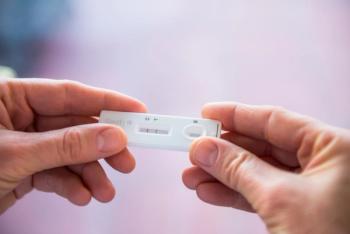
Genetic Defect Identified in Infancy-Onset Diabetes
Infants with permanent neonatal diabetes mellitus, a rare disorder presenting within six months of birth, have a genetic defect leading to misfolded proinsulins and cell death, according to a report in the May issue of the Journal of Clinical Investigation.
MONDAY, May 5 (HealthDay News) -- Infants with permanent neonatal diabetes mellitus (PNDM), a rare disorder presenting within six months of birth, have a genetic defect leading to misfolded proinsulins and cell death, according to a report in the May issue of the Journal of Clinical Investigation.
Carlo Colombo, from Bambino Gesu Children's Hospital, Scientific Institute in Rome, Italy, and colleagues sequenced the human insulin gene (INS) in 10 unrelated probands with PNDM or infancy-onset diabetes, noting that a mutation in the mouse counterpart is associated with PNDM and death of pancreatic beta-cells.
The researchers found seven heterozygous mutations in the INS gene. In eight patients, insulin secretion was initially detectable at the onset of diabetes but then rapidly declined. The mutant proinsulins were defective in protein folding and secretion, and cells expressing the mutant proinsulins had markers of endoplasmic reticulum stress and reduced viability.
"In conclusion, we find that mutations in the insulin gene that promote proinsulin misfolding may cause PNDM," Colombo and colleagues write.
Copyright © 2008
Newsletter
Access practical, evidence-based guidance to support better care for our youngest patients. Join our email list for the latest clinical updates.














